Samukawa-jinja Shrine is located on a low plateau about 7km upstream from the mouth of the Sagami River (it is thought to have carved the bank in ancient times) in a beautiful natural area where the Sagami River flows out from the sacred Mt. Fuji.
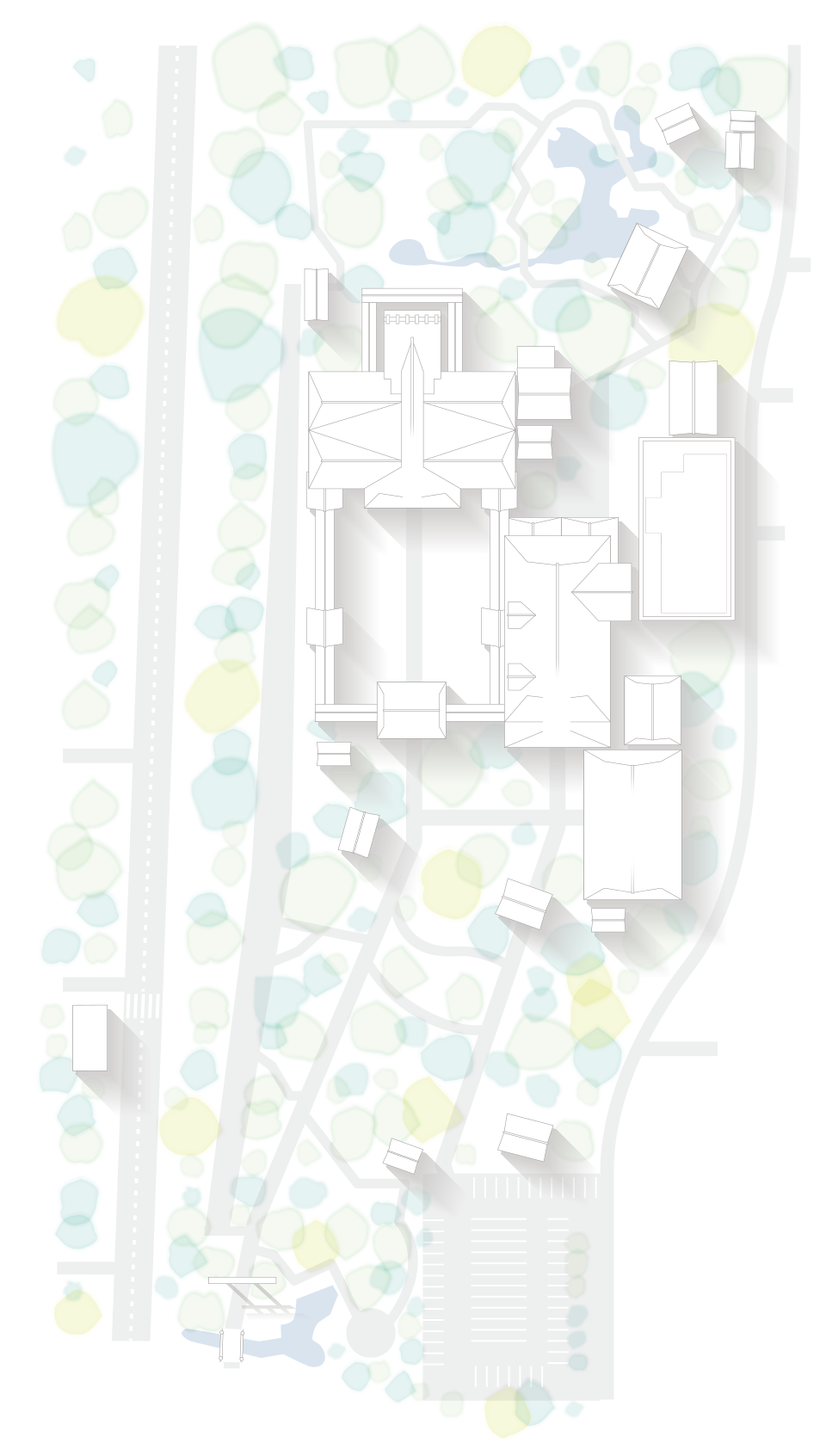
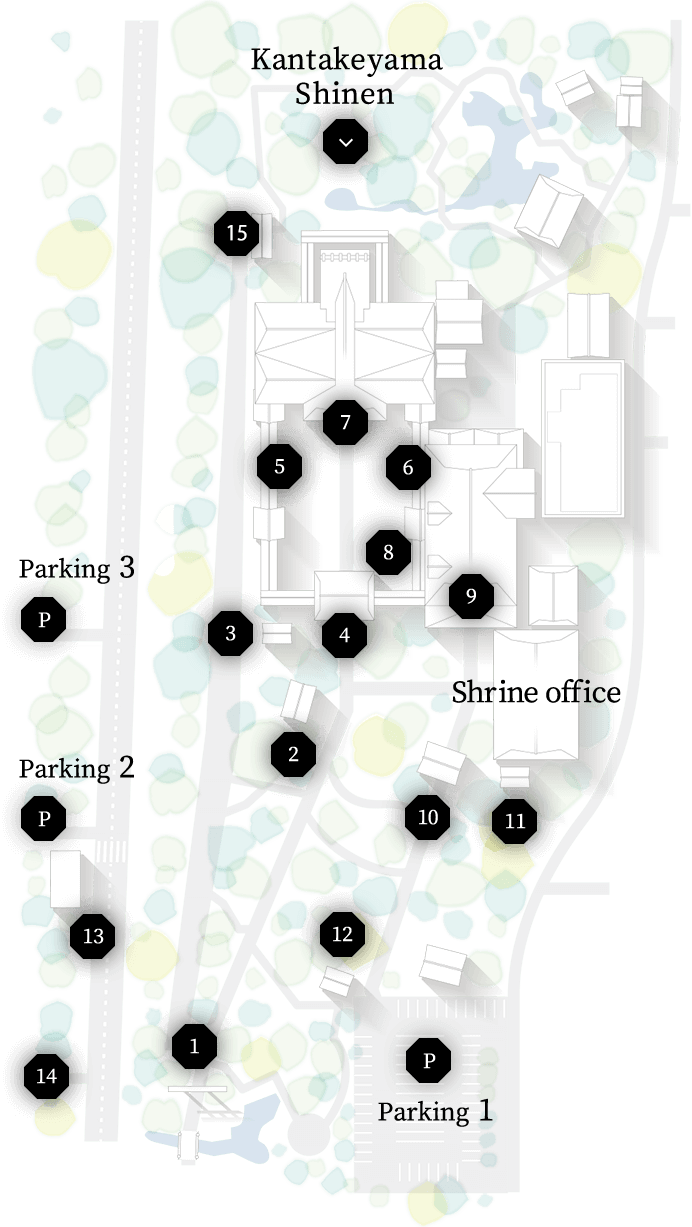
1Kamiike-bashi, San-no-torii
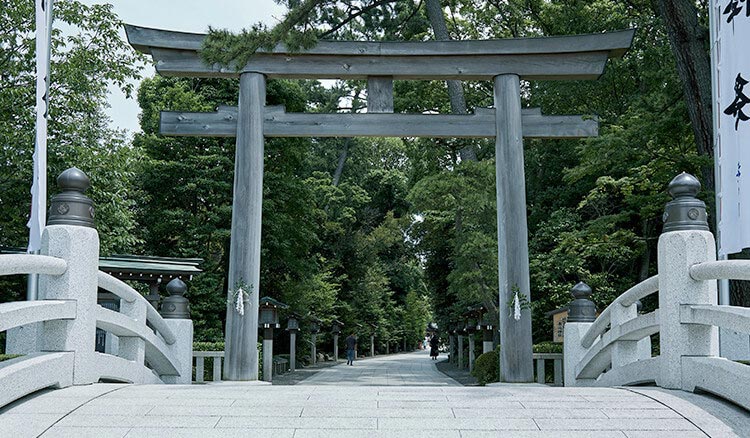
The arched bridge across San-no-miya Kamiike River, which is called “Kamiike-bashi (Kamiike bridge)” was rebuilt in 2011 due to decay. It has been said that the gods use the bridge to cross. The “san-no-torii” (the third torii) in the Myoujin style is made of hinoki (cypress). It was rebuilt in 1990 for celebrating the 2650th anniversary of the accession of Emperor Jinmu.
2Temizusha (building for cleaning hands and rinsing mouth)
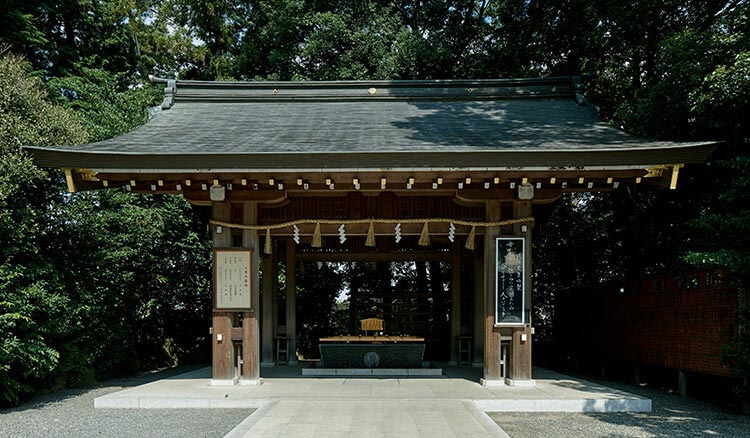
Chozu-bachi (wash-basin) is made of stone from the foundation stone used for building the old third gateway. The rag stone inserted in the north-south direction indicates that the main building faces the west-south direction rather than due south.
3Shinmesha
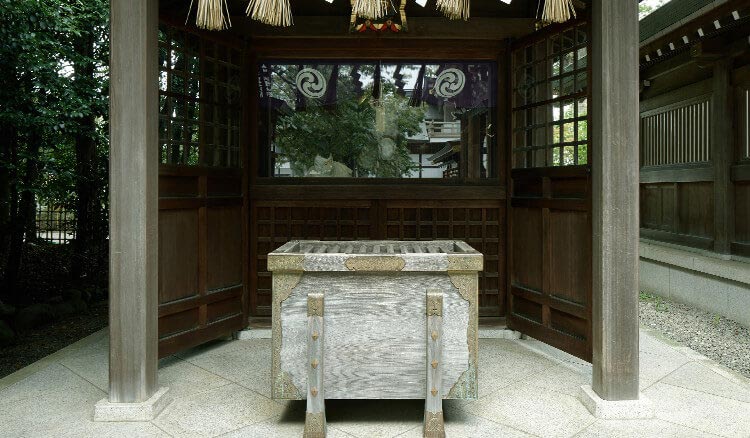
This is where the horses that the kami ride are dedicated. The Shinmesha was built for celebrating the 50th year of Emperor Showa’s ascension to the throne. The sculpture of shinme led by the monkey was carved by a sculptor named Hirano Fuzan. This sculpture has been kept in the Shinmesha. There is a place to hang ema (votive horse tablets) on the side of the Shinmesha.
4Shinmon (Shrine Gate)
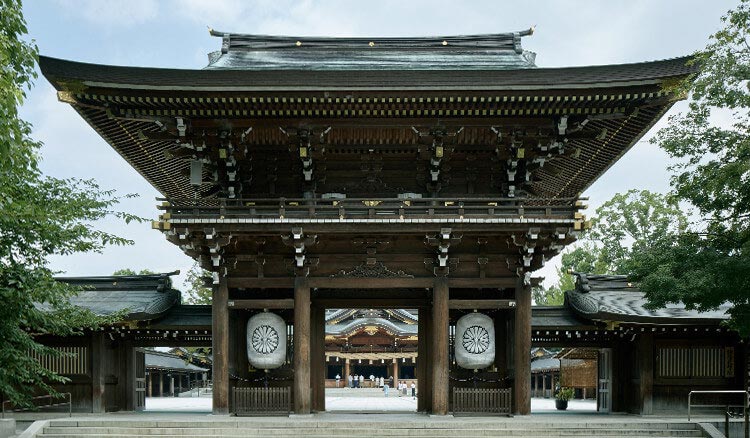
A multi-storied gate called Shinmon was built in 1993. Every New Year, “Geishun Nebuta” are displayed on the gate to welcome visitors.
5Goshinboku (Sacred Tree)
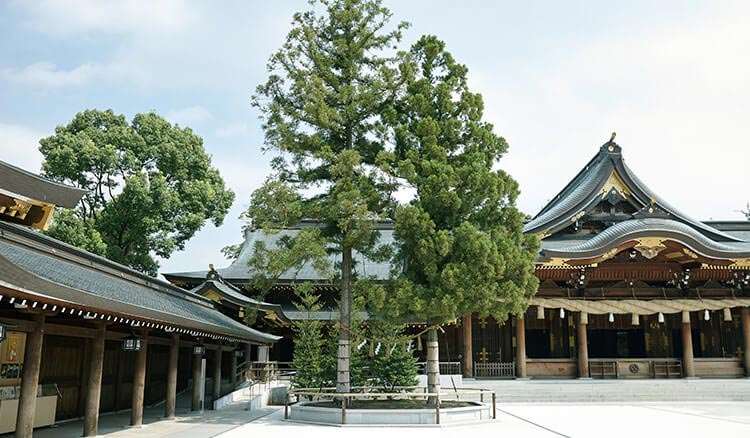
Two cedar trees on the side of the main hall are worshiped as sacred trees of Samukawa-jinja Shrine. It has been orally transmitted that Samukawa-hiko-no-mikoto and Samukawa-hime-no-mikoto as are the enshrined deities that dwell in those trees.
6Kontengi (Armillary Sphere)
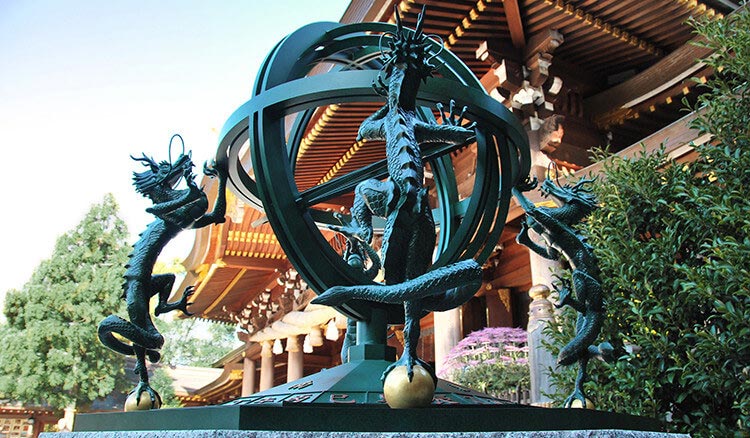
The replica of Kontengi located to the right of the worship hall is the device for observing the position of the planets and the stars. Since ancient times the movement of the stars has been thought to teach people about directions and the future of the nation. The calendar was made based on the movement of celestial bodies. Furthermore, the calendar was used to divine whether fortune would be good or bad. Kontengi placed in the precinct of Samukawa-jinja Shrine has four dragon statues at its corners in accordance with the legend of dragons supporting heaven.
7Gosyaden (Main Hall)
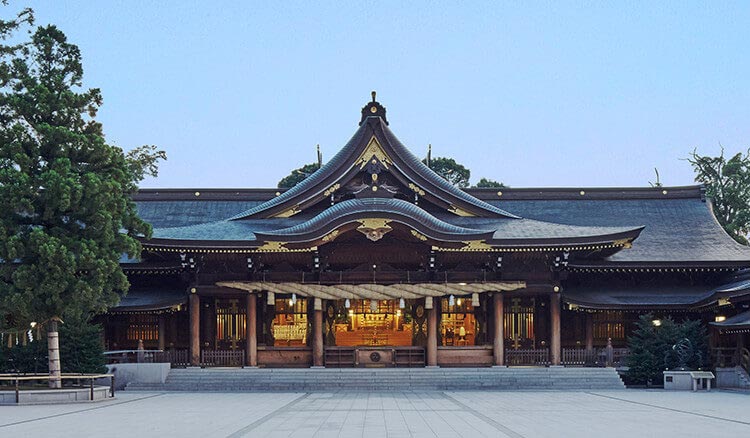
This building for deifying enshrined deities was built in October, 1997. The Gohonden, made of hinoki, has auxiliary facilities including Tozai (west-east) wings. The worship hall has a capacity of 216 seats for worship.
8Juyosho (Reception)
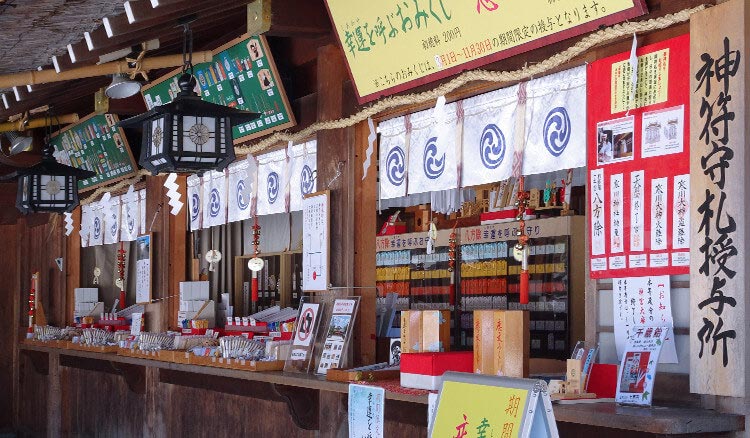
The place for offerring charms and amulets of Samukawa-jinja Shrine. The charms have been made to praise the divine virtues of Samukawa-daimyojin and ask for protection against impending misfortunes from all directions, as well as the conferring of fortune. These amulets are purified and imbued with prayers by Shinto priests. They are available in accordance with your wish, through which you may express your daily gratitude to the kami.
9Kyakuden (Reception Hall)
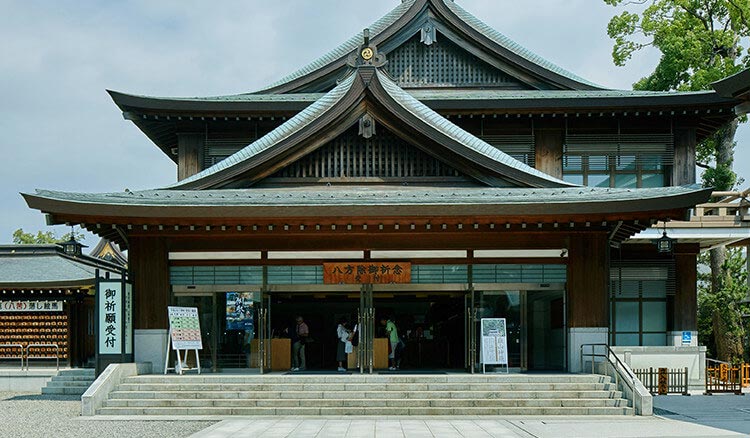
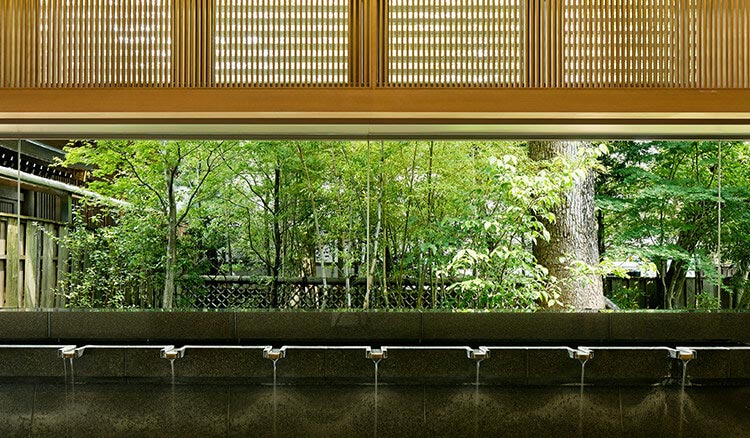
A building with two-stories above ground with the first basement for prayer reception, which also serves as the anteroom.
10Minami-mon (South Gate)
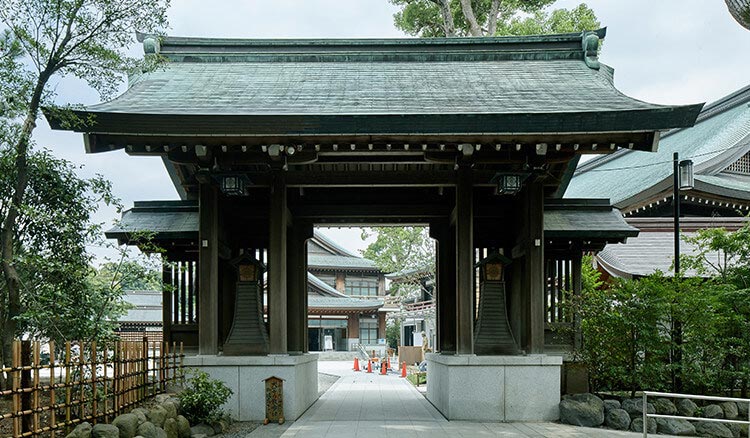
This gate was built in 1929.The original Shinmon was moved, and this structure serves to remind us of the Gohonden.
11Nosatsu-den
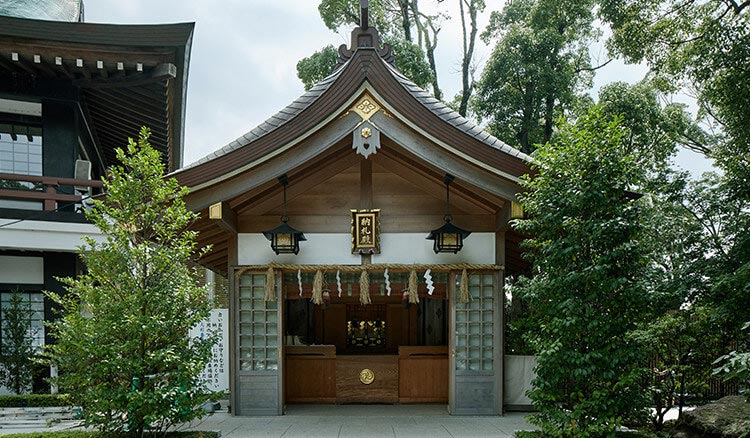
The building where charms and amulets offered by shrines are dedicated. This building was built in 2012. The building with its elegant flowing shape is made of hinoki (Japanese cypress), and roofed with copper plates called dobanbuki.
12Ningyo Hosai-den
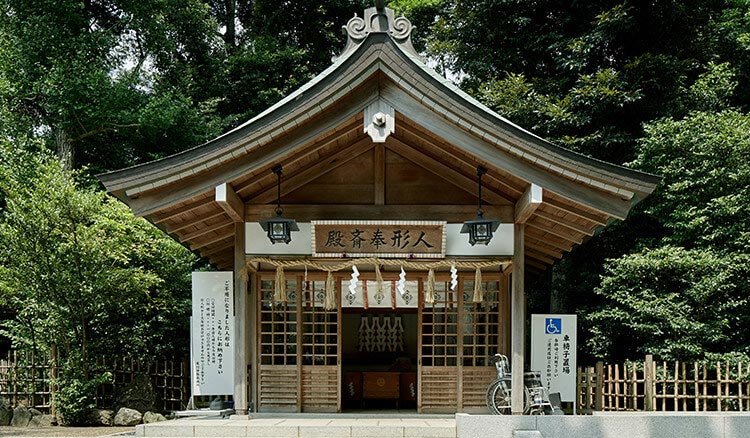
The place where cherished dolls and stuffed animals are dedicated. Burnable dolls and stuffed animals are only received upon payment of the ceremony fee at least 1000 yen (you may pay any amount) during open hours from 9:00 to 16:00.
13Chinju-no-mori Koyo
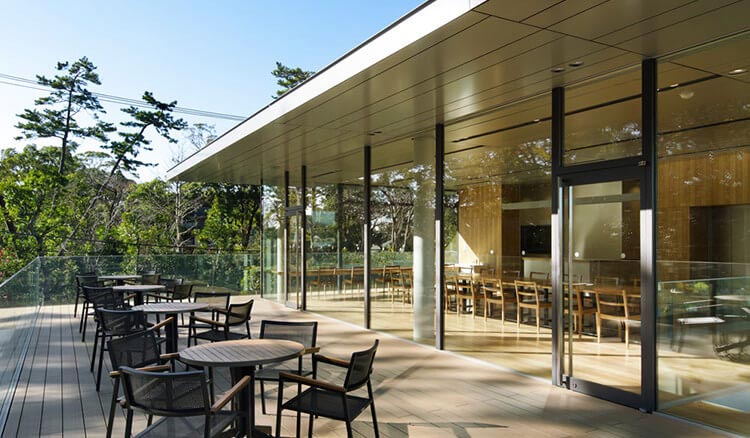
The two-story building built at the end of December 2013 was opened at the entrance of the second parking place of Samukawa-jinja Shrine. The building has the souvenir shop on the first floor, and its café restaurant on the second floor so that visitors stop by for rest or a meal after worship. It is a comfortable and cozy place that allows you to enjoy the seasonal scenery through the wide glass-paned window.
14Massha Miyayama-jinja Shrine
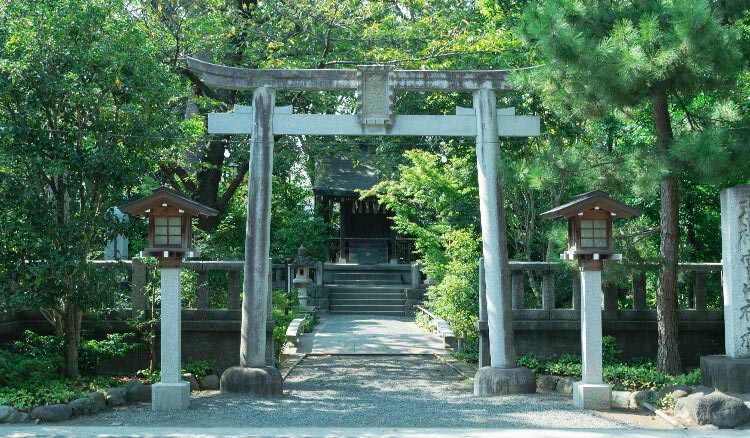
Passing through the precinct, you can see the massha (branch shrine) of Miyayama-jinja Shrine on the opposite side of the path. Miyayama-jinja Shrine was established by merging seven smaller shrines located in their respective districts of the Miyayama area through construction of the new shrine building at the current location. In September 1911, four shrines including Kotohira-jinja shrine, Yatsurugi-jinja shrine, and Ikazuchi-jinja shrines were merged. Mitsumine-jinja shrine was further merged in 1969 to finally establish Miyayama-jinja Shrine.
15Sotomon
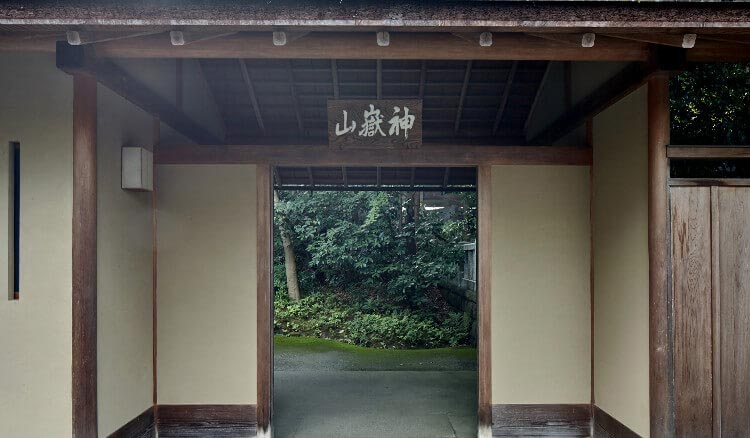
The traditional Japanese architecture of the entrance gate of Kantakeyama Shinen will invite visitors to the sacred world where Daimyojin is enshrined.
The garden where the sacred spring called “Nanba-no-koike” is. It is also known for being deeply related to the origin of Samukawa-jinja Shrine, within which it is centrally located.
* Only visitors who have received prayer services are permitted to enter.
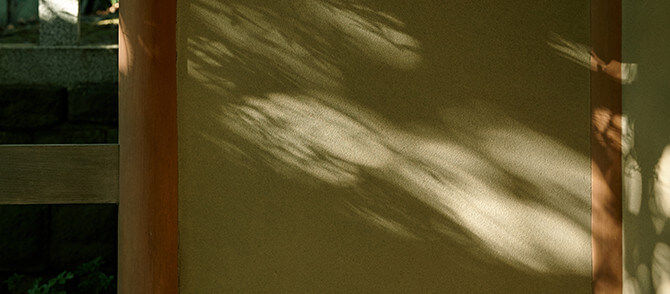
 more
more
